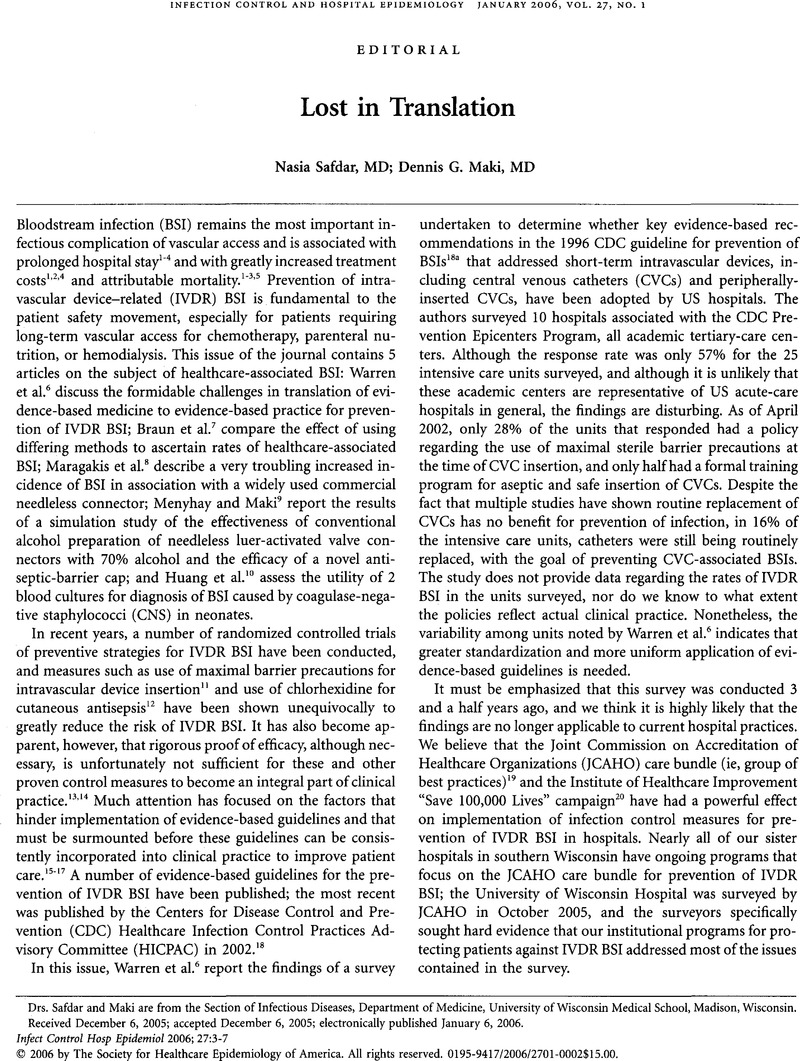Crossref Citations
This article has been cited by the following publications. This list is generated based on data provided by Crossref.
Krein, Sarah L.
Hofer, Timothy P.
Kowalski, Christine P.
Olmsted, Russell N.
Kauffman, Carol A.
Forman, Jane H.
Banaszak-Holl, Jane
and
Saint, Sanjay
2007.
Use of Central Venous Catheter-Related Bloodstream Infection Prevention Practices by US Hospitals.
Mayo Clinic Proceedings,
Vol. 82,
Issue. 6,
p.
672.
Krein, Sarah L.
Hofer, Timothy P.
Kowalski, Christine P.
Olmsted, Russell N.
Kauffman, Carol A.
Forman, Jane H.
Banaszak-Holl, Jane
and
Saint, Sanjay
2007.
Use of Central Venous Catheter-Related Bloodstream Infection Prevention Practices by US Hospitals.
Mayo Clinic Proceedings,
Vol. 82,
Issue. 6,
p.
672.
Rodriguez-Paz, Jose M.
and
Pronovost, Peter
2008.
Prevention of Catheter-Related Bloodstream Infections.
Advances in Surgery,
Vol. 42,
Issue. ,
p.
229.
Saint, Sanjay
Kowalski, Christine P.
Banaszak-Holl, Jane
Forman, Jane
Damschroder, Laura
and
Krein, Sarah L.
2009.
How Active Resisters and Organizational Constipators Affect Health Care–Acquired Infection Prevention Efforts.
The Joint Commission Journal on Quality and Patient Safety,
Vol. 35,
Issue. 5,
p.
239.
O'Grady, Naomi P.
Alexander, Mary
Burns, Lillian A.
Dellinger, E. Patchen
Garland, Jeffrey
Heard, Stephen O.
Lipsett, Pamela A.
Masur, Henry
Mermel, Leonard A.
Pearson, Michele L.
Raad, Issam I.
Randolph, Adrienne G.
Rupp, Mark E.
and
Saint, Sanjay
2011.
Guidelines for the prevention of intravascular catheter-related infections.
American Journal of Infection Control,
Vol. 39,
Issue. 4,
p.
S1.



